The printed circuit boards supplied by NCAB Group are used in a number of rapidly growing industries as well as applications that are undergoing rapid development. This blog post presents a general picture of the trends driving developments and their significance. We also talk to a Norwegian customer of ours, Easee, which manufactures charging boxes for electric vehicles, one of the fastest growing segments on the market.
MORE ARTICLES ABOUT THE TOPIC:
The changes and developments taking place in society are driving new needs for electronics. This includes by definition, printed circuit boards that are required for many applications in various industries. Looking at the current situation from an overall perspective, Michael Larsson, VP Sales at NCAB Group, highlights some important trends.
“Although the pandemic has brought many challenges in the last year and a half, the ongoing global trend toward urbanization has brought about greater prosperity for large segments of the population. We have seen a rise in the proportion of middle-income earners, particularly in the major Asian nations. More and more people are not only living more comfortably and longer but also wanting better standards and better service,” he says.
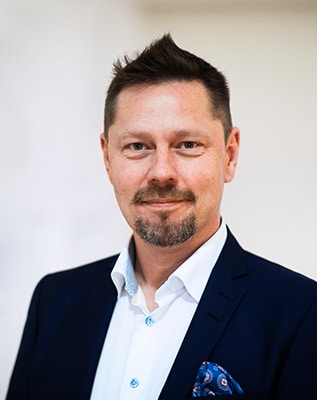
“We need to be better at saving energy and properly implement the shift to fossil-free energy sources and transport.”
Michael Larsson
VP Sales, NCAB Group
At the same time, efforts should be directed into making these growth trends sustainable, so that we can all meet the climate challenge and protect our planet’s environment. We need to be better at saving energy and properly implementing the shift to fossil-free energy sources and transport. Another important aspect of sustainability is working to secure a healthy future for this and future generations, as well as our ecosystems.
“An example of this work is the incredible advancements we are seeing in IT for healthcare. The sector has benefitted massively from this, with new medical equipment and new technology applications rendering it more flexible. The amazingly rapid developments in the communications field will further strengthen the health care sector,” he says, citing as an example the use of our phones as interfaces for millions and millions of vaccine bookings.
Electric vehicles and the energy industry in transition
Electronics is an important enabler in the development of, for example, the real estate and manufacturing industry, solar and wind energy, smart grids, electric vehicles and their associated infrastructures. In real estate, we are seeing the rapid development of smart control equipment, control and operating systems that apply new technology to optimize well-being, net operating income and energy use. In regards to developments that benefit the climate, we are seeing extensive developments towards more electric means of transport. This will require new fleets of vehicles and upgraded infrastructures incorporating even more electronics than before.
“We are seeing new equipment being developed within medical technology and healthcare that, for example, uses remote control and sensors for patient-centered use,” Michael Larsson continues. “Instead of having to visit a hospital, the patient can obtain help in or near their home.”
The energy industry is also undergoing change. Here, solar and wind energy have now taken the step from symbolic initiatives into becoming competitive energy sources. This is creating a need for more electronics to handle the transfer of power surplus locally to the power grid for storage, or onward transport to where it is needed. In the manufacturing industry, new control and regulating technology is finally being developed as a result of the advances in sensor technology.
“We are seeing new equipment being developed within medical technology and healthcare that, for example, uses remote control and sensors for patient-centered use.”
Michael Larsson
VP Sales, NCAB Group
Important Driving trends
- Global urbanization and prosperity
- The shift to fossil-free energy sources
- Electrification of vehicles
- Rapid development within life sciences
- Rapid development within communications
Sensorics and miniaturization are driving industry
Sensorics is one of the technology trends that is driving the development of electronics. Another important trend we find within all industries is a general miniaturization, with increasingly physically smaller products.
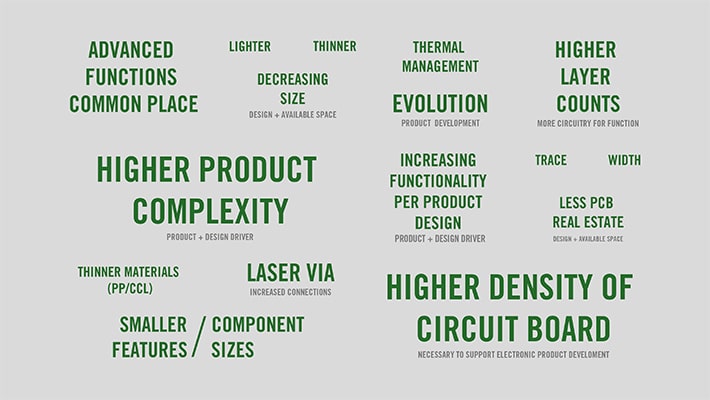
The need to accommodate more and more electronics into smaller units creates a great many opportunities to develop new applications. At the same time, it also creates new challenges in terms of, for example, thermal management issues (read more about thermal management here), says Michael Larsson.
“The need to accommodate more and more electronics into smaller units, creates a great many opportunities to develop new applications”.
Michael Larsson
VP Sales, NCAB Group
Looking specifically at PCBs, he notes that miniaturization leads to an increasing number of NCAB’s customers making technological leaps in their designs and, for example, using more layers and advanced solutions such as HDI, flex and flex-rigid boards.
“Being bold enough to make such a move can result in the customer getting a smarter solution. With today’s products, for example, an HDI solution can often help avoid the unnecessary hassle that a traditional design would cause.”
Consolidation in progress
Commercially, the pandemic has been a challenge for everyone in the PCB industry, but smaller players have been hit harder than others. It drives consolidation both among product owners, contract manufacturers and their suppliers. In the future, size will become increasingly important if you want to be seen as a meaningful business partner in the industry.
”If you look at the demand for printed circuit boards from a geographic angle, Asia, where the vast majority of boards are manufactured, is the region that is both the largest and fastest growing. After that, Europe is the largest market for PCBs. About twice as much volume is imported there compared to the third largest market, North America. So for us at NCAB, this means that we are generally in the right markets. However, we are working to gain even better coverage in markets where we are not so well represented, given that an important part of our business concept is being close to the customers,” says Michael Larsson.
Reliable PCBs
The way things are going in the industry is opening up new significant opportunities for NCAB. The developments we have been seeing bring with them a breadth of opportunities in a growing market, with a great number of potential new customers. The company is represented in the relevant industries with an offer that is specifically designed for applications where electronics just have to work over time and/or in tough environments.
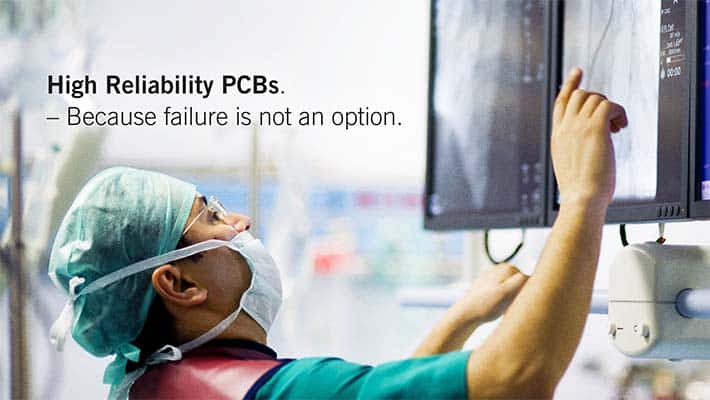
“Our slogan ‘reliable PCBs’ sums up the concept well. The common denominator for our customers is the need for printed circuit boards with high reliability both in the manufacturing process and during the entire life of the end product. Avoiding the negative consequences of equipment that does not work is often crucial for them. The boards we supply can be technically advanced, but that’s not an absolute necessity. A printed circuit board in a train signal system may be less advanced than that in a toaster, but reliability in the former case is much more important.” says Michael Larsson.
“A printed circuit board in a train signal system may be less advanced than that in a toaster, but reliability in the former case is much more important.”
Michael Larsson
VP Sales, NCAB Group
Today, there are more and more applications where the electronics do not allow room for failure. Reliability is becoming increasingly crucial. An important part of NCAB’s strategy is to work closely with product owners, who are now seeking more control over the sourcing of the PCBs included in their products.
“This increased focus on control is often linked to key constructions where their own brand may be at risk. Apart from the quality aspects, this trend is also driven by the product owners’ own sustainability ambitions and the legal requirements in this area. Having control over sustainability aspects throughout one’s supply chain has quickly become increasingly important for both product owners and EMS companies,” Michael Larsson explains.
Growth through knowledge
Going forward, NCAB will continue to focus on growth, both organically and through acquisitions. Capacity is constantly being expanded and NCAB continuously conducts sourcing and factory management work to meet customers’ needs in terms of both technology and, for example, country of manufacture.
“In addition to control, knowledge is an important part of our offer. Based on the customers’ needs, NCAB has over the years built up a knowledge bank that enables us to help customers with good and smart solutions, optimized for production,” says Michael Larsson and concludes:
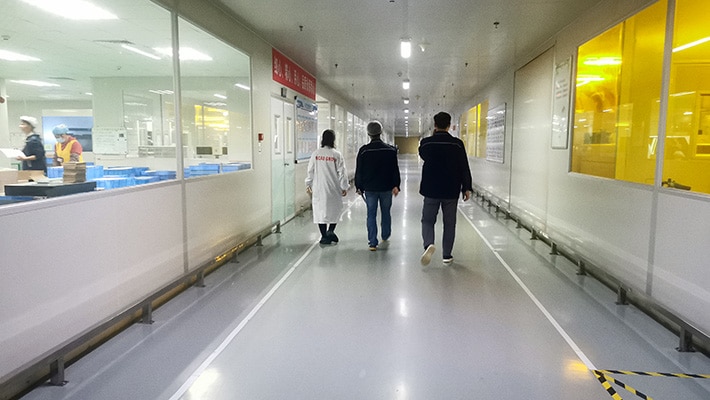
“PCBs are the only products we work with, so we are well acquainted with the needs and challenges that customers have. We can be compared to an outsourced purchasing department that cares about the key figures. We ensure that our 2,600 current customers receive quality printed circuit boards delivered on time, boards that work optimally for production and last the entire life of the end product.”
Industries undergoing rapid development with new electronics needs
- Real Estate
- Solar and Wind power
- Smart Power Grids
- Automotive industry and associated infrastructure
- Medical Technology and healthcare
- Communication networks (fibre and mobile)

Charging boxes for electric cars require reliable printed circuit boards
Easee is a Norwegian manufacturer of charging boxes for electric vehicles with its headquarters in Sandnes. Established in January 2018, the company has since grown rapidly and the number of products sold has increased exponentially. The sales target for 2021 is 400-500,000 units. They all incorporate PCBs from NCAB Group.
“Norway was quick off the mark when it comes to electric vehicles. After starting operations on the home market, Easee expanded to sell products in other markets in Scandinavian and Northern Europe – Sweden, Denmark, Great Britain, Germany and the Netherlands. Next in line is the rest of Europe and we have significant growth ambitions. Already by next year, our aim is to be delivering millions of chargers,” says Kjartan Nilsen, Chief Hardware Architect at Easee.
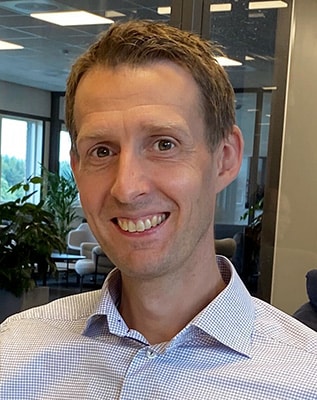
“Going forward, we see a potential where cars with batteries function as a vital part of a new eco-society.”
Kjartan Nilsen
Chief Hardware Architect, Easee
The company’s concept is compact, reasonably priced and nicely designed charging boxes, primarily intended for home use. Electric car owners usually want to be able to park and charge overnight to have a fully charged car every morning. In addition, many want two electric cars. Electronics are required to distribute power consumption between cars and between the house and the cars. The battery should also be easy to charge at the right time of day, when the rest of the house is using less power.
“Going forward, we see a potential where cars with batteries function as a vital part of a new eco-society. The car battery can not only be charged with locally produced energy from, for example, solar panels, but also serve as an energy bank which is then used to supply the house with electricity when the sun is not shining. This would reduce the need for expensive and resource-intensive new capacity in the electricity grid. But it does require electronics that can handle high currents in combination with controlling logic,” he underlines.
Two-part, scalable and compact design
Easee’s charging boxes carry quite large currents. This requires circuit boards containing a great deal of copper, both to conduct the current and dissipate excess heat.
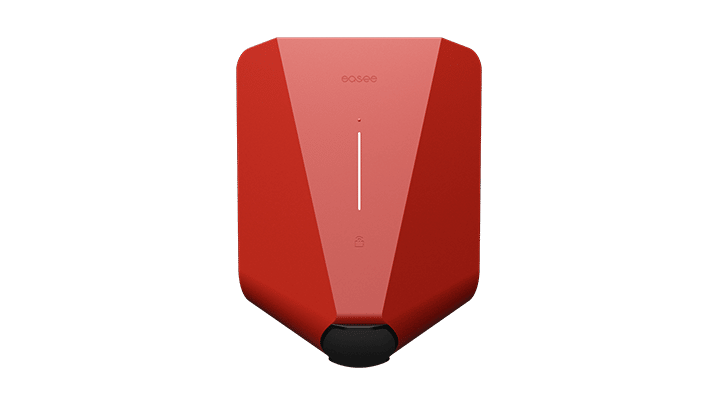
”Especially bearing in mind today’s copper prices, I find the new so-called “bus bar embedded PCBs” design trend as particularly interesting, with the copper much more precisely built into the PCB. It allows higher current to be conducted without using more copper than necessary. This is not something we are using today, but the technology looks interesting for the future,” says Kjartan Nilsen.
With high-current designs, it is important that the conductor width and insulation distance are appropriately positioned. Easee’s products distinguish the parts that handle the actual charging of the cars from the more high-tech parts used for communication and data processing. This could be described as a two-section design.
”Our charging boxes are mounted by robots and we use ready-made modules integrated on the circuit boards.”
Kjartan Nilsen
Chief Hardware Architect, Easee
The very fast-growing electric vehicle industry demands an ability to quickly scale up production to large volumes. With this in mind, Easee designs are built so that they can be assembled as an automated procedure as possible. This also makes it economically competitive to manufacture the charging boxes in Norway, close to the market, with shorter lead times and less costly logistics.
Our charging boxes are mounted by robots and we use ready-made modules integrated on the circuit boards. Everything is connected to the printed circuit board and nothing needs to be screwed on manually. We are also investing in a compact design, which makes the entire solution smaller and allows us to pack more units onto the same pallet during distribution. We save costs for resource consumption, transport and warehousing. In addition, this improves our sustainability performance,” he says.
Why Easee has chosen NCAB as its printed circuit board partner
- NCAB delivers printed circuit boards from several factories.
- NCAB can match our design with a suitable factory.
- NCAB is represented locally here in Norway and in the printed circuit board factories.
- We have positive experience of NCAB in terms of on time deliveries and high quality.
- With NCAB, we get a single supplier to deal with.
- NCAB is transparent with us regarding the choice of factories and more.
The quality of the PCBs is crucial
The quality of the printed circuit boards is crucial, especially considering that the end product often ends up outdoors in climates where the temperature can shift from minus 20°C or even lower in winter, to +50°C in the sun on a hot summer’s day.
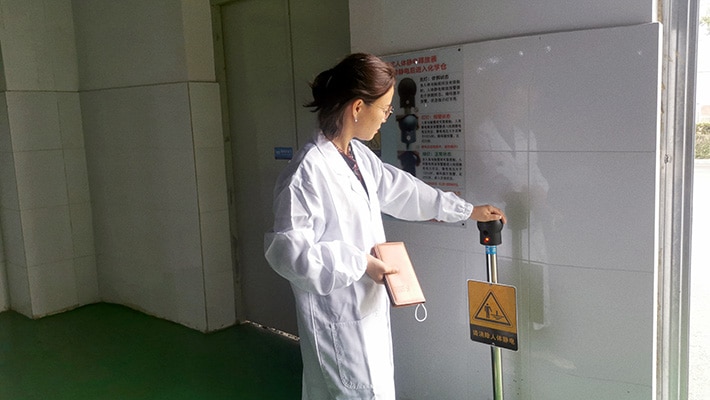
”Our boards must be reliable. Any errors detected when it is too late are very expensive to rectify. Minimizing the number of complaints, returns and replacement products is also important from an environmental perspective. Thanks to NCAB’s ability to interact with its many factories, they can match our requirements and designs according to each individual case,” says Kjartan Nilsen.
Easee is also particularly appreciative of NCAB’s approach involving employees, who through established routines, follow up and control the factories and can handle communication with the factories in the local language.
”Our printed circuit boards must be reliable. Any errors detected when it is already too late are very expensive to rectify.”
Kjartan Nilsen
Chief Hardware Architect, Easee
”This saves us a lot of work as we don’t need to do this kind of follow-up work ourselves. We know that we can expect consistent deliveries with the same high quality from NCAB and can therefore concentrate on our own parts,” he states.
Good contact and reliable deliveries
NCAB is also on site locally in Norway and Easee can handle all contact via the same one contact person.
“We have very good contact with NCAB Norway’s Managing Director, Ørjan Ødegård who both understands our needs and is very transparent about which factory is used and why. This builds trust, says Kjartan Nilsen.”
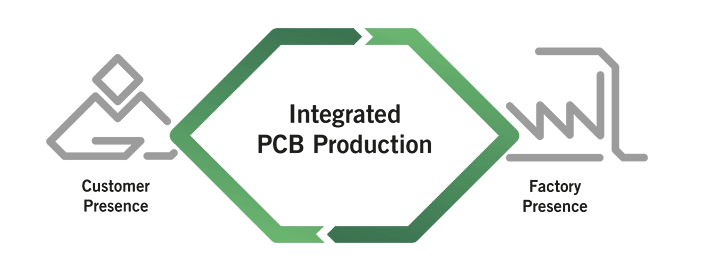
Reliability in deliveries is also extremely important. The factories that are hired are required to purchase enough raw materials and be able to deliver on time.
“We have had a very good experience of NCAB in this context as well. We have never had a stoppage. It is extra important to have a reliable partner, since our large volumes are shipped by boat so that we can keep transport costs down. And this requires even greater foresight and planning,” he concludes.
About Easee AS
Norwegian industrial company with headquarters in Sandnes and offices in Oslo, Bergen, Glasgow in the United Kingdom, Wismar in Germany and Amsterdam in the Netherlands. The company designs, develops and distributes products that will become an integral part of the electricity grid of the future. Their first commercial products are two types of charging boxes for electric vehicles: Easee Home and Easee Charge, as well as peripherals for them. The company was founded in 2018, has approximately 150 employees and in 2020 had sales of NOK 385 million (approximately EUR 37 million).
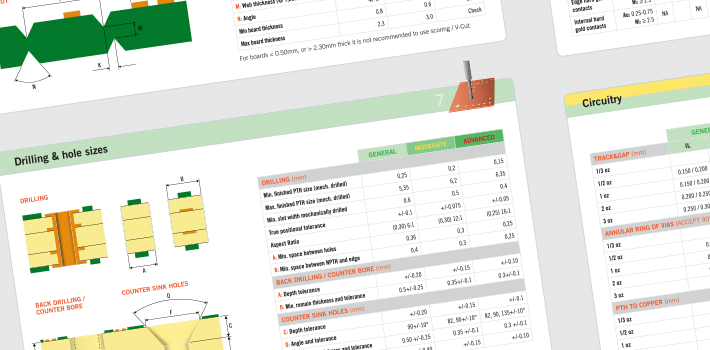
PCB design tools
For more advice about PCB design or applications of PCBs, we
have different PCB tools that can be downloaded for free.
